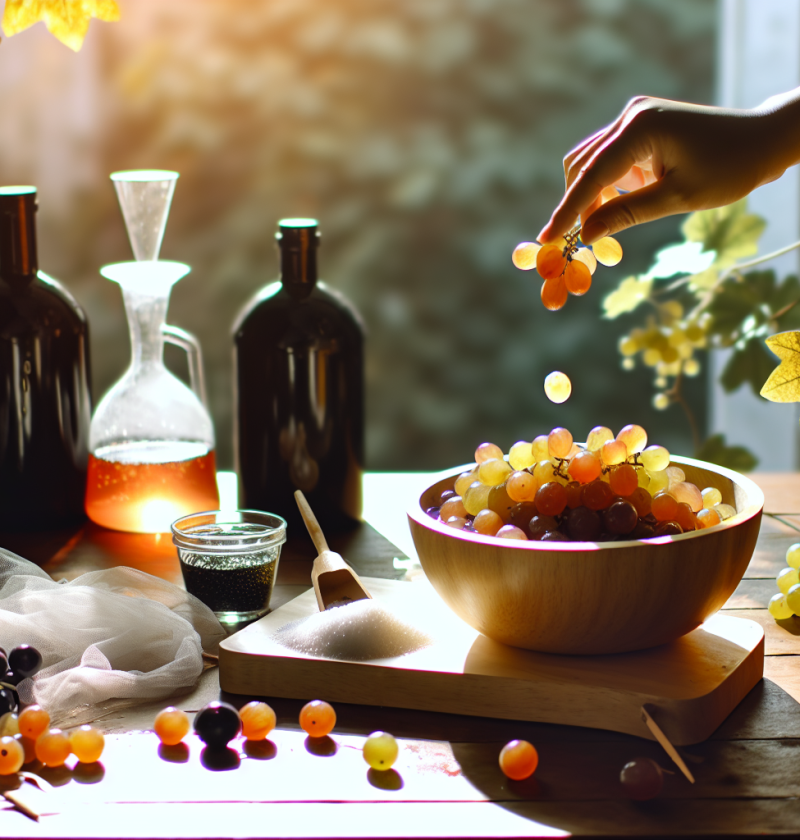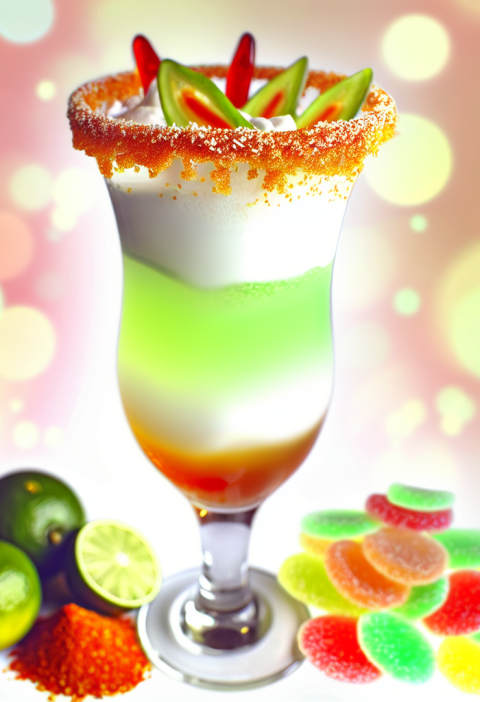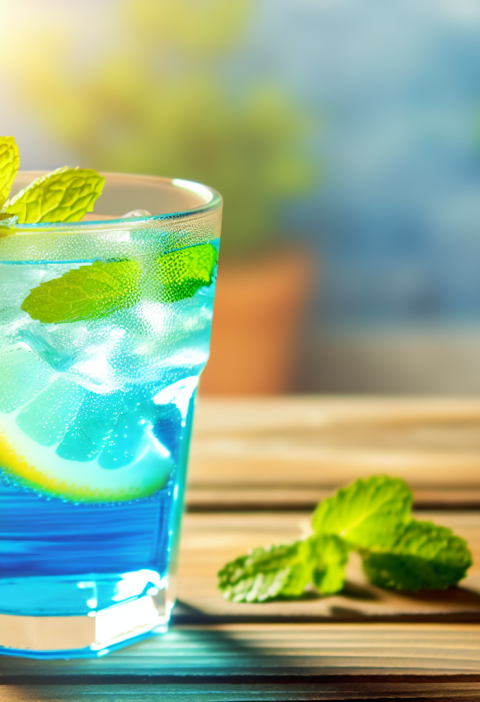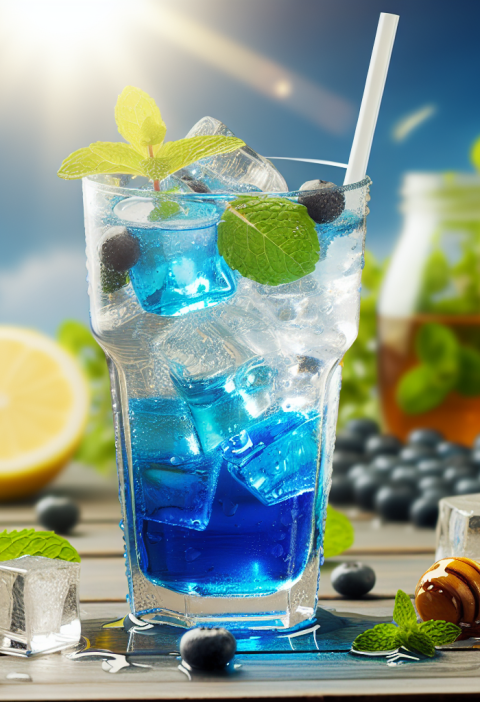“`html
A Journey into the Art of Crafting Exquisite Muscadine Wine
Imagine stepping into a world where sweet, rich flavors burst forth with every sip, where the experience of crafting your own muscadine wine becomes a cherished memory. This muscadine wine recipe invites you to engage your senses and unleash your creativity. Picture yourself gathering fresh muscadine grapes, the sun-kissed fruits shining like jewels, then transforming them into a luscious nectar that captures the essence of your South. This isn’t just a recipe; it’s a journey filled with rich aromas, vibrant colors, and the joy of shared moments. Your loved ones will appreciate the effort, and you’ll feel a great sense of accomplishment. Get ready to embark on this delightful adventure!
Preparation Time
- Gather ingredients: 15 minutes
- Crushing and fermentation setup: 30 minutes
- Fermentation duration: 7-14 days
- Bottling: 1 hour
This recipe is suitable for approximately 5-10 servings, depending on the size of your bottles. The level of difficulty of preparation is medium, as it involves an understanding of fermentation and wine-making basics.
The Necessary Ingredients
- 5 pounds of fresh muscadine grapes
- 1 gallon of water
- 2-3 cups of sugar (adjust to taste)
- 1 teaspoon of potassium metabisulfite (to prevent wild yeast growth)
- 1/4 teaspoon of wine yeast
- 1 teaspoon of pectic enzyme (optional, for clarity)
- Campden tablets (if needed)
- 1-2 teaspoons of acid blend (to taste, if needed)
For a vegan version, ensure all ingredients, particularly the fining agents (if used), are plant-based. For a gluten-free option, simply confirm no cross-contamination occurs during your wine-making process.
The Steps of Preparation
Crafting muscadine wine is a beautiful meditation on patience and technique. Here’s how we’ll do it together, step by step.
- Gather all ingredients and ensure your equipment is clean and sanitized.
- Wash the muscadine grapes thoroughly, removing any stems or leaves.
- In a large container, crush the grapes by hand or with a potato masher, allowing the juices to flow.
- Add water to the crushed grapes and stir until combined.
- In a separate bowl, mix sugar and a little hot water until dissolved, then add to the grape mixture.
- Dissolve potassium metabisulfite in a small amount of water and add it to the must (the grape mixture).
- Allow the mixture to sit for 24 hours to let the sulfites work.
- After 24 hours, sprinkle wine yeast over the surface of the must without stirring.
- Cover the container loosely with a cloth or fermentation lock and let it ferment at room temperature for 7-14 days, stirring daily.
- Once fermentation slows (bubbles decrease), siphon the wine into sanitized bottles, leaving sediment behind.
- Seal the bottles and allow the wine to condition for at least 2-3 months in a cool, dark place.
- Enjoy your homemade muscadine wine with friends and family, savoring each drop!
Nutritional Benefits
- Rich in antioxidants: Muscadine grapes are known for their high levels of antioxidants, which can help combat oxidative stress.
- Heart health: Moderate consumption of wine is linked to improved cardiovascular health and reduced cholesterol levels.
- Supports digestion: Wine, in moderation, can aid digestion due to its polyphenol content.
- Boosts mood: Sharing a glass of homemade wine with loved ones can enhance social bonding and uplift spirits.
Possible Additions or Upgrades
Feel free to get creative! You might consider incorporating different fruits, such as blueberries or peaches, to enhance the flavor profile. Experimenting with spices like cinnamon or cloves could also add a unique twist. For a sweeter finish, you can reserve some sugar to sweeten the wine post-fermentation. Seeking a drier finish? Reduce the sugar and let fermentation work its magic! The possibilities are endless.
Questions & Answers
**Can I use frozen muscadine grapes?**
Yes, you can use frozen grapes; ensure they are properly thawed before use.
**How long will my muscadine wine last?**
Homemade muscadine wine can last several years if stored properly in a cool, dark place.
**What if my wine doesn’t ferment?**
Ensure you’ve activated your yeast properly and provide a warm environment; consider adding more yeast or adjusting sugar levels.
**Can I mix muscadine wine with other wines?**
Yes! Mixing different wines can create a unique flavor, just ensure they have complementary profiles.
**What is the best serving temperature for muscadine wine?**
Chilled to around 50-60°F (10-15°C) often enhances the fruity flavors.
**How do I know when my wine is ready?**
Wine will be clearer with fewer bubbles; alternatively, taste-testing can also indicate readiness.
**Can I enhance the alcohol content further?**
Yes, by adding more sugar during the fermentation process, ideally before you introduce the yeast.
**Is it okay to add additives like flavoring or coloring?**
While some wine enthusiasts frown upon additives, experimenting with natural flavorings can yield enjoyable results.
**What is the significance of pectic enzyme?**
Pectic enzyme helps clarify the wine by breaking down pectin, which can result in a clearer final product.
**Could my wine turn into vinegar?**
If exposed to oxygen, wine can ferment further and turn into vinegar. Always store wine sealed to prevent this.
From my experience, sharing this journey with friends and family makes the process all the more rewarding. Each sip of your muscadine wine will bring back memories of gatherings and laughter, and I encourage you to celebrate your success by sharing this recipe on social media and with fellow wine enthusiasts. Cheers!
“`







